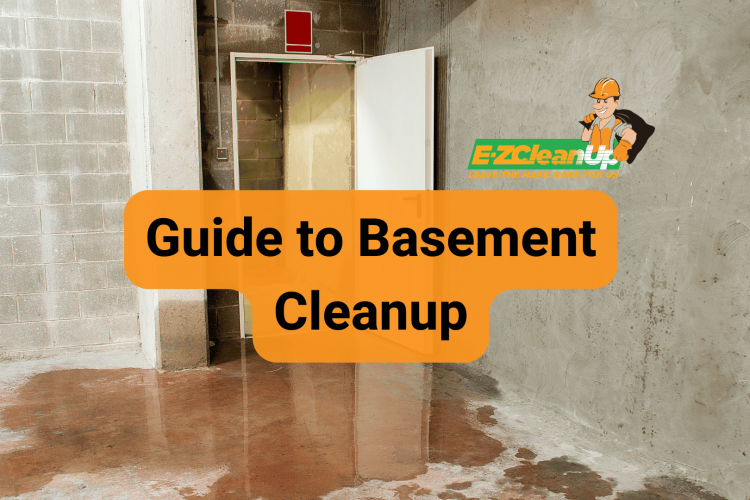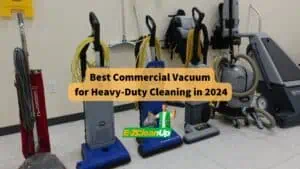Overwhelmed by the chaos in your basement? You’re not alone. Basements often become the dumping ground for all things we can’t find a place for. But, with a solid plan and some elbow grease, you can transform your basement from a cluttered mess into a functional space.
The Importance of Cleaning Your Basement
Noticing a neglected basement may offer more than just a sense of accomplishment after its restoration. Intricate, often undervalued benefits lie in a well-maintained basement.
Health and Safety Implications
Vital are the health and safety benefits brought about by cleaning your basement. Occasional cleanup prevents the buildup of dust, mold, and mildew, which, if unchecked, can lead to serious health issues like allergies and respiratory difficulties. Mold and mildew grow in damp, dark places, particularly in poorly ventilated basements. So, ensuring a clean, dry, and well-ventilated basement guards against these health concerns. In addition to this, a cluttered basement poses safety risks such as slips, trips, and falls. Clearing unnecessary objects and maintaining an organized basement diminishes these hazards.
From a structural standpoint, regular cleaning provides opportunities to spot potential issues early on. As stated by Yan Margulis, owner of Capable Group Inc, “A periodic inspection during cleaning activities helps detect signs of water leaks, pest infestations, or foundation cracks. Early detection saves you expensive repairs in the future.”
Potential for Added Space and Utility
Beyond the health and safety implications, cleaning your basement introduces extra functional space at your disposal. Imagine transforming a cluttered storage area into a tailored, functional space– a playroom for the kids, a workout room, a home office, or even a cozy guest room. The possibilities are endless. However, usability potential remains locked if your basement remains cluttered and disorganized.
Emptying out your basement reveals the square footage available. Once you visualize the space in its entirety, tailoring it to suit your needs becomes an exciting proposition. Basements often represent the largest unused space in our homes. Unlocking this potential is part of the importance of cleaning your basement.
>> How to Declutter Your Basement
Preparing for a Basement Cleanup
Preparation, being a crucial step in the basement cleanup process, dramatically influences the efficiency and quality of the tasks ahead.
Gathering Essential Supplies
Adequate tools and supplies will make the cleaning job both efficient and uncomplicated. For an effective cleanup, gather items such as sturdy garbage bags, cleaning gloves, brooms, dust masks, and sealable boxes. For instance, garbage bags are essential for collecting discarded items, while cleaning gloves protect your hands as you scrub and clean.
Setting Up a Workspace
Designating a workspace can significantly simplify the basement cleanup exercise. Repurpose a regular table or a portable folding table to inspect, sort, and clean items. This workspace should be as close to the basement entrance as possible to facilitate easy movement and handling of items. Using a well-lit workspace eases the process of sorting items into categories such as keep, donate, discard, or sell.
Safety Precautions
Safety holds paramount importance during a basement cleanup. Remember to always wear appropriate protective attire, including gloves, dust masks, and closed-toe shoes. Ensure the basement is adequately ventilated in order to prevent the accumulation of dust or mold spores that might lead to respiratory complications. The use of a portable fan or dehumidifier can effectively increase airflow. Lastly, if you encounter any signs of structural damage or significant mold infestation, it might be prudent to call in professionals to handle the situation safely.
Basement Cleanup Checklist
Step-by-Step Guide to Basement Cleanup
Having covered the fundamentals of preparing your space, let’s now dive into the actual cleaning process. Here is a step-by-step guide to thoroughly clean your basement. Remember, meticulousness ensures an efficient and safe cleaning process.
Removing Clutter and Unnecessary Items
Decluttering is the foremost step in basement cleaning. Your basement might house a staggering range of items, from old furniture and unused toys to piles of paperwork. Adopt an organized approach as you clear the objects in your space.
As a first measure, classify items into three distinct categories: keep, discard, and donate. Items of sentimental or practical value, such as photo albums or functional appliances, get a place in the “keep” pile. Unused items in excellent condition may find new owners, so donate these at local charities. As for junk or broken items, proper disposal is the best route.
Deep Cleaning Techniques
Engage deep cleaning techniques after the decluttering step. Dust, mop, and vacuum each nook and corner effectively for thorough cleaning.
For a more profound clean, Yan Margulis, suggests using a mixture of water and mild detergent. Wipe down the walls and the floor using a scrub brush lightly lathered with the solution. Rinse the surfaces with clean water afterwards. Use a dehumidifier to accelerate the drying process, a necessity before localizing mold or structural issues.
Remember, consistent maintenance and regular deep cleaning can transform your basement into an inviting space. Basements, unforgivingly overlooked, might just turn into the star feature of your home with a little dedication.
Tackling Stubborn Stains and Marks
Going beyond typical cleaning, basements often house more challenging stains and marks. Let’s understand how to effectively dissolve them.
Mold and Mildew Removal
Transform your basement from a damp, mold-infested area to a fresh and mold-free space with specific cleaning methods. Mold and mildew introduce significant health risks and damage the infrastructure if left untreated.
In treating mold and mildew, first, identify the source of moisture, as mold thrives in damp environments. Initiate steps towards moisture reduction such as improving ventilation, using dehumidifiers, or waterproofing the basement, consequently decreasing the chances of mold recurrence.
For small, non-toxic mold problems, a mixture of white vinegar and water proves effective. Spray the solution onto the infected area, leave it for an hour, then wipe clean with a damp cloth.
Stubborn mold infestations may necessitate professional help, particularly when dealing with toxic mold varieties.
Graffiti and Paint Stain Removal
Minimize the nuisance of graffiti or paint stains in the basement with targeted cleaning strategies.
Approach graffiti with a paint-thinning solvent, which breaks down the paint structure, aiding in the removal process. Apply the solvent following safety guidelines, ensuring adequate room ventilation, and testing on a small surface to prevent unintended damage. Once the solvent is applied, graffiti generally loosens, requiring a simple scrub for removal.
Eliminate paint stains from activities such as paint spills during renovations or children’s art projects by blotting fresh spills on hard surfaces with a dry cloth, preventing the paint from spreading and seeping deeper. For dried stains, scrape the surface with a putty knife followed by a cleaning solution of warm water and mild dish soap.
Every stain type calls for a unique approach; understanding these differences paves the way towards a spotless basement. Regular investments in basement cleaning and maintenance can provide a safer, healthier, and more functional living environment.
Tips for Organizing Your Basement
When it comes to attaining a clean, clutter-free basement, diligent organization holds the key. The focus of this section lies in providing practical, actionable suggestions to help bring a sense of order to your basement.
Sorting and Storing
Sift through the items remaining in your basement after an effective cleaning process. Segregate the specifics such as tools, holiday decorations, and sports gear. Trusted home improvement expert Yan Margulis, suggests storing each category of items in separate, clearly marked plastic bins to protect them from moisture and pests.
Labelling and Accessibility
Clearly label all your storage containers. Commit to an intuitive labeling system, spelling out the contents of each bin in large, legible print. Adhere to a strategy where frequented items reside in easily accessible areas, while seldom-used materials find a place at the back or bottom of the storage pile.
Creating an Organized System
Devise an organized system that suits your needs and available space. Consider designating different zones within the basement for specific purposes. For example, spare one area for laundry, allocate another for tools, and leave ample space for a home gym or children’s play zone if applicable. Remember, every item in your basement must own a preset, defined space to foster effective organization.
Taking Advantage of Vertical Space
Maximize the utility of available space by exploiting the vertical expanse of your basement. Install shelves, pegboards, or wall-mounted racks to store items off the floor, thereby reducing clutter and optimizing your basement space. Hanging heavier items such as bicycles or gardening tools securely on wall-mounted hooks also contributes to a well-organized, efficient, and incident-free basement.
Preventative Measures for Future Messes
Moving forward, consider these preventative measures to keep your basement in optimal condition, maintaining its functionality and cleanliness.
Routine Maintenance and Cleaning
Establish a regular maintenance and cleaning schedule for your basement. Consistency herein mitigates accumulation of dust and mold, subsequently reducing risk of structural damage or health issues. Cleaning your basement every two weeks—as advised by Yan Margulis of Capable Group—enables you to promptly address emerging issues such as moisture accumulation or pest infestations. Use this opportunity to reorganize any items that might have been misplaced, ensuring the basement remains clutter-free.
Proper Storage Techniques
Your choice of storage practices plays a pivotal role in maintaining a clean and organized basement environment. Opt for waterproof, sealed storage bins over cardboard boxes to protect belongings from potential water damage. For robust protection, consider plastic shelves rather than wooden alternatives, as these resist moisture and mold growth more effectively. Regularly examine your storage infrastructure to ensure no damage or rearrangements disrupt the system’s efficiency. Clear labeling of bins promotes intersystem ease-of-access, contributing to long-lasting cleanliness and organization.
Basement Ventilation Tips
Efficient ventilation keeps your basement fresh and damp-free, preventing development of mold and mildew. The implementation of exhaust fans or dehumidifiers, particularly in areas with high moisture, ensures the space remains dry. Annual check-ups of your ventilation system, maintaining clean air filters and vents, protect against long-term damage caused by humidity. Such measures bolster the health and safety of your basement space, reflecting the preventative strategies advised by Capable Group experts.
Space Planning Tool
Troubleshooting Common Basement Cleanup Problems
Even with diligent cleaning, some basement problems persist. Certain issues may need a bit more expertise to resolve effectively. As outlined by Yan Margulis, owner of Capable Group, a home restoration expert, some common persistent problems include odors and stubborn stains.
Addressing Persistent Odors
Persistent odors can indicate several issues like mold growth, dampness, or even pest problems. Initially, identify the source of the odor. Next, address the issue accordingly. For example, if dampness causes the smell, ensure the basement is properly ventilated. Use dehumidifiers as a supplementary measure to reduce humidity effectively.
Dealing with Persistent Stains
Persistent stains, especially from water damage or rust, often require more than just a simple wipe-down. Start by determining the source of the stain. Water damage stains typically require treatment with specialized products or methods, while rust stains might need professional intervention. Always remember, treat the source first to prevent recurrence. Reach out to experienced professionals, such as those at Capable Group, for effective stain removal techniques specifically tailored to your basement’s condition.
The Benefits of a Clean Basement
You’ve now got a handle on the essentials of basement cleanup. It’s not just about decluttering or deep cleaning. It’s about transforming your basement into a functional, healthy, and safe space. Remember, organization is key. Using bins, labels, and shelves can help you maximize your space while keeping it tidy.
Don’t let persistent problems like odors or stubborn stains discourage you. There’s always a solution, whether it’s improving ventilation or seeking help from professional restoration services. And when it comes to maintaining your basement’s cleanliness, don’t underestimate the value of expert advice.
With these tips, you’re well-equipped to tackle any basement cleanup task. So go ahead, roll up your sleeves, and start reaping the rewards of a clean, clutter-free basement. It’s worth the effort.













